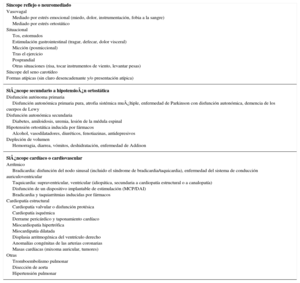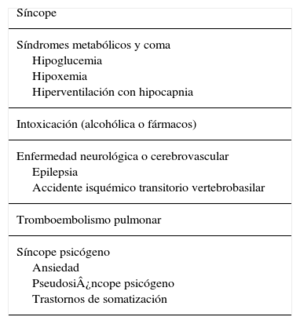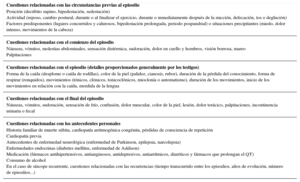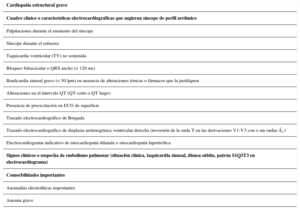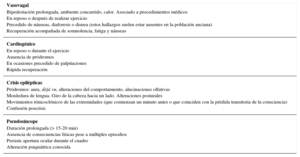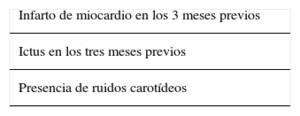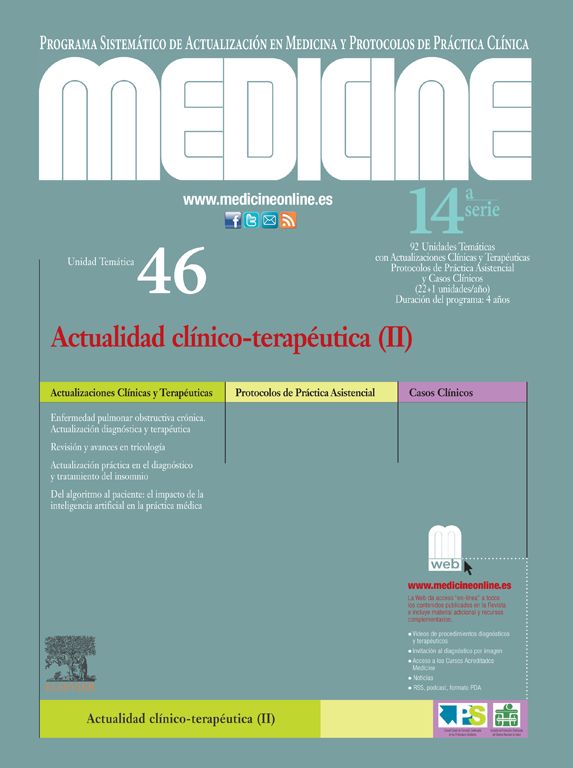El síncope es típicamente un cuadro de difícil valoración por la limitada capacidad del paciente y, en ocasiones, también de sus acompañantes para describir las circunstancias exactas en que se ha producido y, a través de ellas, detalles importantes en cuanto a su posible causa. Asimismo, las causas varían desde algunas banales hasta otras que pueden resultar letales, lo que hace que su correcto enfoque sea clave para el pronóstico del paciente.
DiagnósticoEl diagnóstico debe encaminarse en primer lugar a dilucidar si lo que el paciente ha presentado es, verdaderamente, un síncope y no otro tipo de cuadro de disminución o pérdida del nivel de consciencia. Un segundo paseo esencial consiste en establecer la presencia o ausencia de aspectos de riesgo en el contexto y en la forma en que el síncope se produjo. Finalmente, hallazgos derivados de la exploración física y pruebas complementarias pueden apoyar sospechas concretas y contribuir a orientar mejor el diagnóstico.
ManejoEn base al diagnóstico de sospecha, a la presencia o no de factores de riesgo y a los hallazgos obtenidos en la exploración y pruebas complementarias, debe decidirse la necesidad de ingreso y la indicación de pruebas complementarias. En el caso de sospecha de síncope por causa arrítmica, es clave definir la sospecha de taquiarritmias o bradiarritmias como causantes del cuadro, ya que en función de esto se indicará uno u otro tratamiento definitivo.
Palabras clave
Syncope is typically a picture that is difficult to assess because of the limited ability of the patient and, sometimes, also of his or her companions, to describe the exact circumstances in which it occurred and, through them, important details as to its possible cause. Likewise, the causes vary from some banal ones to others that can be lethal, which makes that its correct approach is key for the prognosis of the patient.
DiagnosisThe diagnosis should first be directed to elucidate if what the patient has presented is, truly, a syncope and not another type of reduction or loss of level of consciousness. A second essential step is to establish the presence or absence of risk aspects in the context and in the manner in which syncope occurred. Finally, findings derived from physical examination and complementary tests may support specific suspicions and help guide the diagnosis better.
ManagementBased on the diagnosis of suspicion, the presence or absence of risk factors and the findings obtained in the exploration and complementary tests, the need to enter and the indication of complementary tests must be decided. In the case of suspicion of syncope due to arrhythmic causes, it is essential to define the suspected tachyarrhythmias or bradyarrhythmias as the cause of the condition, as this will indicate one or the other definitive treatment.
Keywords
Identifíquese
¿Aún no es suscriptor de la revista?
Comprar el acceso al artículo
Comprando el artículo el pdf del mismo podrá ser descargado
Teléfono para incidencias
De lunes a viernes de 9h a 18h (GMT+1) excepto los meses de julio y agosto que será de 9 a 15h


